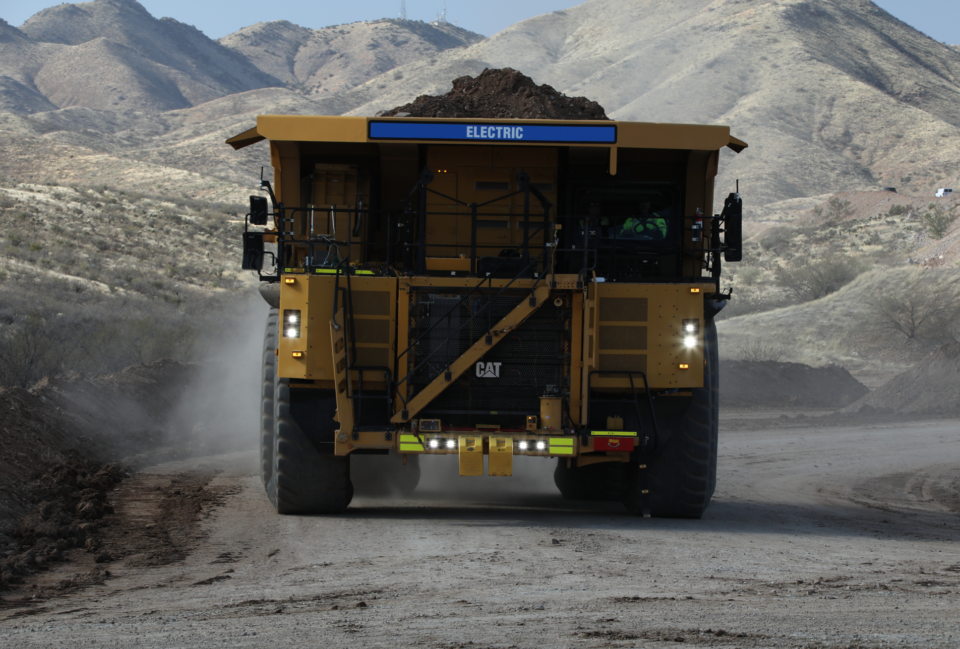Vale and Caterpillar have signed an agreement to test battery electric large trucks and energy transfer systems, as well as conduct studies on ethanol-powered trucks. The aim is to support Vale in achieving its goals of reducing scope 1 and 2 (direct and indirect) carbon emissions by 33 percent by 2030 and zeroing its net emissions by 2050.
Haul trucks powered by batteries are being developed by Caterpillar. A battery powered truck with capacity of 217 t (240 st) will be tested by Vale at its operations in Minas Gerais. Caterpillar is also developing energy transfer solutions for trucks, which will be tested at the mining company’s operations in Pará over the next few years.
The two companies will also begin a joint study on a dual fuel solution for haul trucks operating on ethanol and diesel fuel.
Diesel emissions from mine operations account for 15 percent of Vale’s direct CO2eq emissions. Among mine equipment, the haul truck is the biggest consumer of diesel and therefore the biggest contributor to emissions. For this reason, investing in initiatives to decarbonize mines and establishing strategic collaborations are fundamental to Vale’s goals.
“We are developing a portfolio of options to decarbonize Vale’s operations, including electrification and the use of alternative fuels in the mines. The most viable solutions will be adopted,” said Ludmila Nascimento, Vale’s Energy and Decarbonization director. “We believe that ethanol has great potential to contribute to the 2030 target because it is a fuel that has already been adopted on a large scale in Brazil, with an established supply network, and which requires an active partnership with manufacturers. We stand together to support them in this goal.
“There have been significant advances in the development of electric truck technology in recent years and these innovations will play an important role in bringing our net emissions to zero by 2050,” explained José Baltazar, Vale’s director of Engineering for Mine and Plant Operations. “We are offering our mines in Brazil as a testing ground, with their very specific characteristics, in order to contribute to achieving our goals and building a cleaner mining industry.”
Denise Johnson, Caterpillar’s Resource Industries group president, added: “Voice of customer is a critical element of Caterpillar’s product development process, and Vale has been a key voice throughout our long history of collaborating on technology and product deployments. We look forward to continuing that collaboration as we launch the next generation of our iconic mining solutions to support our customers’ operational and environmental objectives.”
In 2020, Vale announced an investment of between US$4 billion and US$6 billion to reduce its direct and indirect emissions (scopes 1 and 2) by 33 percent by 2030. This is another step toward achieving the goal of zero net carbon emissions by 2050, in line with the ambition of the Paris Agreement to limit global warming to below 2ºC by the end of the century. The company has also made a commitment to reduce its net emissions from its value chain (scope) 3 by 15 percent by 2035.




